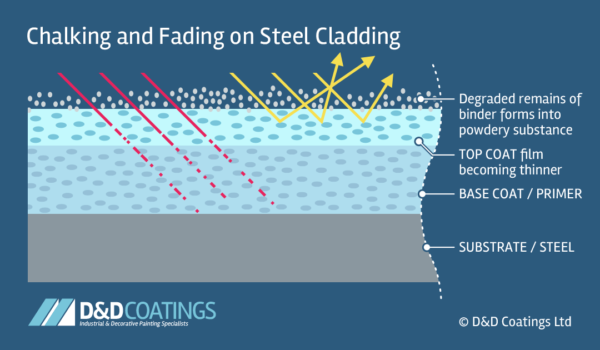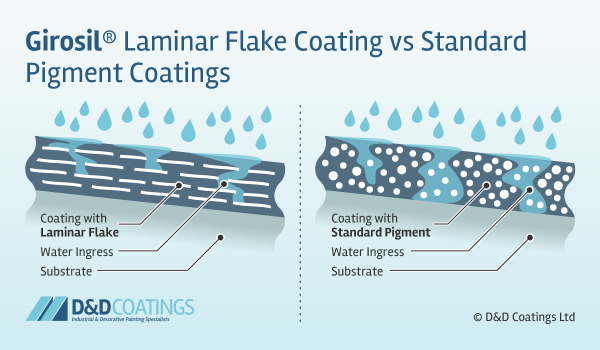Protective coatings have been around for a long time. Gelatin, beeswax and clay were first used to protect building structures as far back as 3000BC! Waterproofing wooden hulled ships became necessary 2000 years later as maritime travel and trade developed. Mankind has battled with corrosion for centuries. Even galvanization has been used for more than 2,000 years.
Fast forward to the industrial revolution and the use of mass produced steel. With each new technical advance came a new technical challenge. For steel this was corrosion, or simply put – rust! In the 1800’s and early 1900’s new paint manufacturers were opening all over the UK, Western Europe and USA. Many different ingredients were tested and used to produce paint. Lead was a commonly used pigment in protective coatings for many years. However this started to be phased out in the 1930s due to the discovery of health and environment risks. Lead was eventually banned in 1992, except for specialist uses.
Traditional pigment coatings
Pigment not only adds colour to a paint it also provides structure and strength. The substrate relies on the pigment in the coating to provide protection. Not only stopping moisture but blocking ultraviolet light too. All of which cause damage and shorten the lifespan of the substrate. The pigment is therefore a crucial component in protective coatings.
Paint pigments have traditionally been loosely spherical in shape but more specifically nodular, prismatic, acicular or lamellae. This makes for better adhesion and easier application, or so we believed.
The problem
Pigments of a generally spherical nature have their drawbacks. They allow UV light to penetrate deep into the binder. This breaks down the resin. The upper levels of pigment then breaks free. The first evidence of this is chalking. At this point the coating system is in the early stages of failure. A newly applied roof coating can start to break down within just a few short years. Having been applied incorrectly and situated in corrosive environments such as coastal areas, can all accelerate degradation. To combat this manufacturers have tested many different materials for the pigment, binder and other additives for decades.

The solution
What if there was a way to create a hard barrier in the coating. A barrier that would be flexible enough in application but robust enough to resist ultraviolet light. Industrial paint manufacturers such as Giromax for example here in the UK have been developing technologies to combat corrosion for years. Controlling it has, at times, seemed almost impossible.
Ultimately the goal is to produce a durable protective coating system that lasts for longer. Ideally for decades, not just a few years. The system should be UV resistant and stop moisture reaching the substrate. Simple you might think! Not so I’m afraid.
Introducing Laminar Flake Coatings
Until quite recently protective coatings hadn’t evolved too drastically. The main components have always been spherical or nodular shaped pigments, solvents and additives all held together with a binder. However we are now witnessing a revolution in the pigment component of the system. Spherical pigmentation is being replaced with zinc flakes. These flakes settle flat in the binder. They overlap and produce and super robust barrier against UV and moisture penetration. When combined with graphene it creates an almost impenetrable layer of protection for steel and other substrates.

How does it work?
Standard pigments are spherical in shape. They allow UV light and moisture to pass through to the substrate more easily. Laminar flake, however, makes this much more difficult. The flakes are platelet-shaped overlapping pigments aligned in parallel to the substrate. They seal and block the path for attacking media from the local environment. Laminar flake coating systems are impervious to ultraviolet light and corrosion causing pollutants.
The science
Zinc flake coatings are non-electrolytically applied coatings. The flakes are produced using materials such as aluminium, zinc, mica and stainless steel. Other components in the system typically consist of silicone and urethane.
The benefits
The benefits of laminar flake coatings are becoming more widely known. Building owners and specifiers want to upgrade their corrosion resistance performance. Laminar flake coatings provide protection for twice as long as traditional coatings. More benefits include;
- Excellent elastic and flexibility properties
- No harmful VOC emissions
- Excellent appearance in a range of colours
- Longer product guarantees
Further reading
https://en.wikipedia.org/wiki/Zinc_flake_coating
https://en.wikipedia.org/wiki/Corrugated_galvanised_iron
https://www.ddcoatings.co.uk/1902/girosil-roofcoat-gutter-edge



